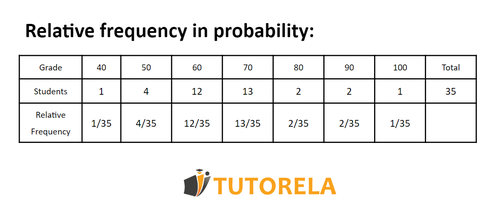Relative frequency represents the number of times a value is repeated in any list of data out of the total data.
Let us illustrate this with an example.
The following table is presented with data describing the scores of students in a given class on the assessment taken.

We are asked to find from the data in the table the relative frequency of score 70.
Looking at the table, we find that 7 students in the class scored 70. We find the total number of students in the class by adding the data in the bottom row of the table.
We obtain:
Students in the class.
According to the definition of relative frequency, this is in our case equal to the number of students in a class that received 70 parts of the total number of students in a class.
Therefore, the relative frequency sought is .








